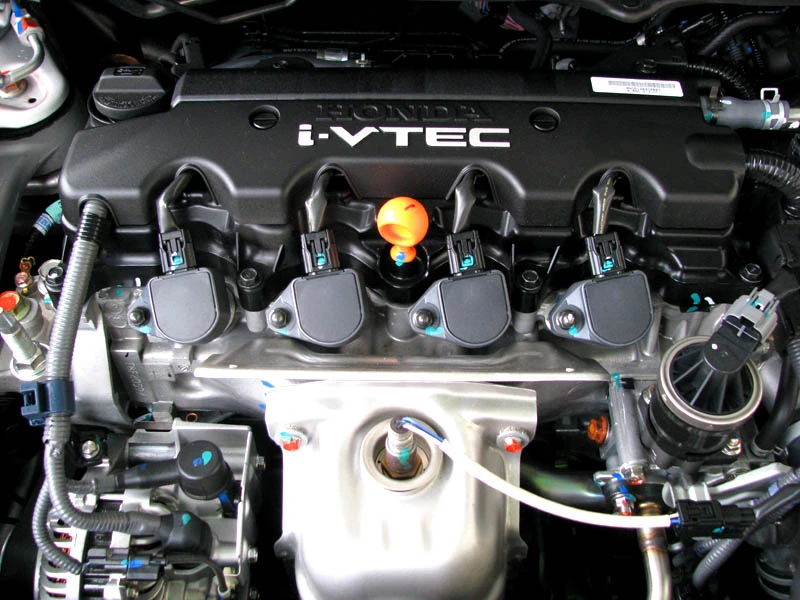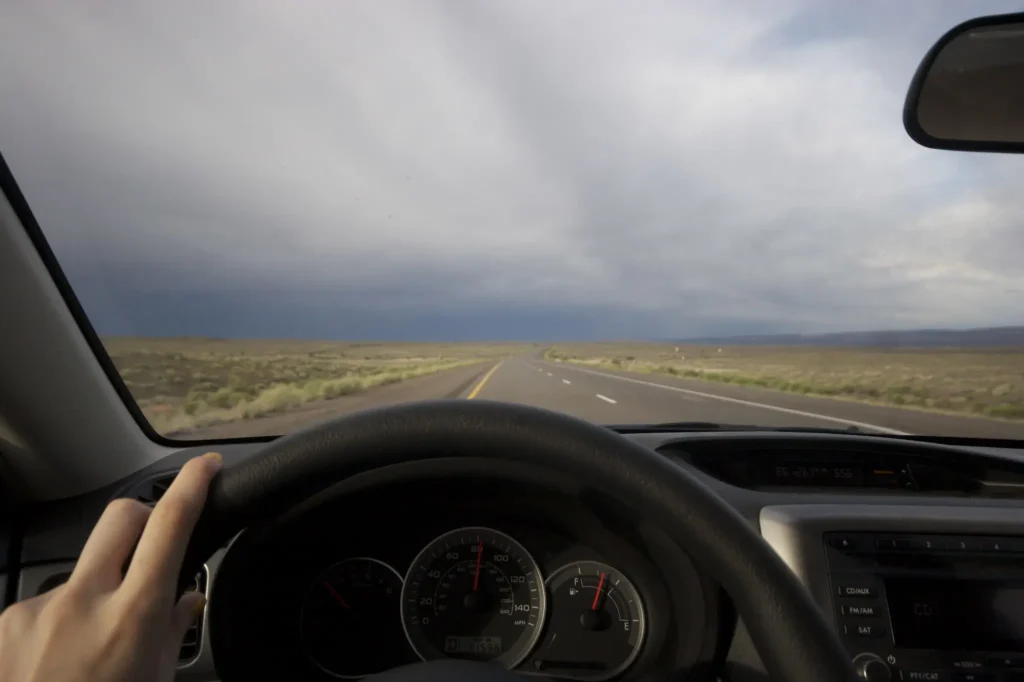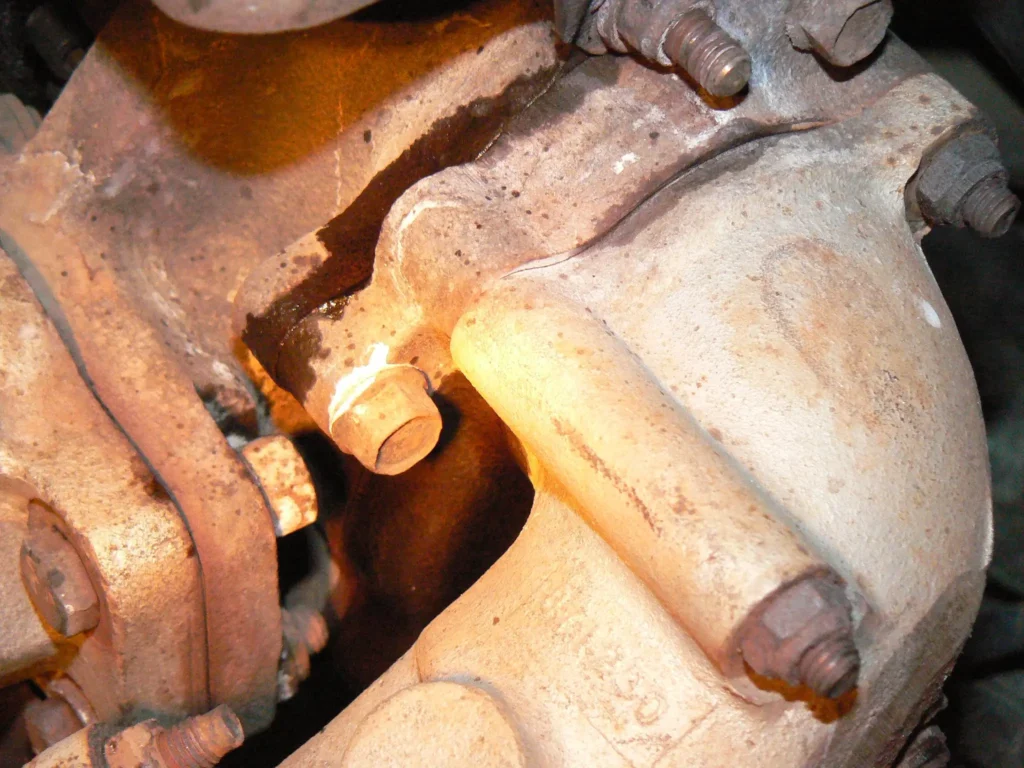If your car Won’t start until it cools down, there are several potential culprits to investigate.
In this comprehensive guide, we’ll explore the most common reasons a car won’t start when hot and provide actionable solutions to get you back on the road. Whether it’s a faulty sensor, vapor lock, or something else entirely, we’ve got you covered.
Overview of Main Causes Car Won’t Start Until It Cools Down
There are a handful of usual suspects that can prevent a hot engine from starting:
- Faulty crankshaft position sensor
- Failed camshaft position sensor
- Defective coolant temperature sensor
- Bad starter motor
- Loose or corroded battery cables
- Clogged fuel filter
- Failing fuel pump
- Vapor lock in fuel lines
- Problem with the ignition system
Issues with sensors, starter motors, and ignition components often worsen as the engine heats up, then improve once cooled down. Let’s explore these common culprits in more detail.
Crankshaft Position Sensor
The crankshaft position sensor monitors the rotation of the crankshaft and feeds this data to the vehicle’s computer. The computer uses this input to control ignition timing and fuel injection.
Over time, the sensor can fail, providing inaccurate or no information to the computer. This confusion prevents the computer from properly firing the spark plugs and fuel injectors. As a result, a hot engine with a bad crankshaft position sensor may not start until it cools down.
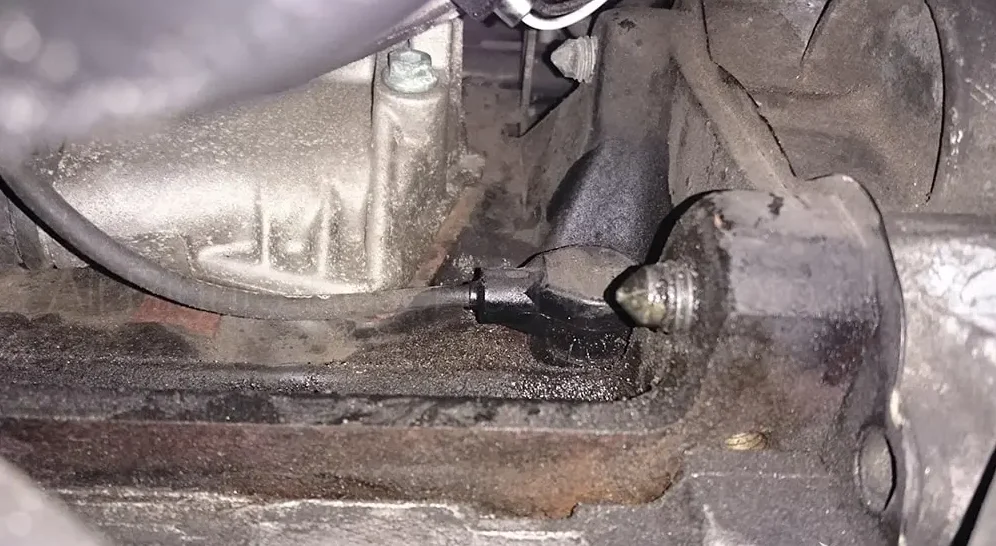
Symptoms of a failing sensor include:
- Hard starting when warm
- Intermittent stalling
- Poor acceleration
- Check engine light
To diagnose a potentially faulty sensor:
- Carefully inspect sensor and wiring for damage
- Use a multimeter to check sensor resistance
- Monitor sensor data with an OBD2 scanner
If tests confirm the sensor is malfunctioning, replacement is required. On many vehicles, the crankshaft position sensor is easily accessible behind the ignition coils or near the front cover.
Camshaft Position Sensor
Similar to the crankshaft position sensor, the camshaft position sensor tracks camshaft movement. This data allows the computer to synchronize valve timing.
When this sensor fails, the computer lacks accurate timing information. As a result, the valves open and close at the wrong times, negatively impacting starting, idling, acceleration, and overall performance.
Camshaft position sensor failure warning signs include:
- No start when hot
- Stalling after restarting
- Misfires at idle
- Rough acceleration
To test the camshaft position sensor:
- Check for damage to sensor and wiring
- Use a digital multimeter to check sensor resistance
- Monitor live sensor data with an OBD2 scanner
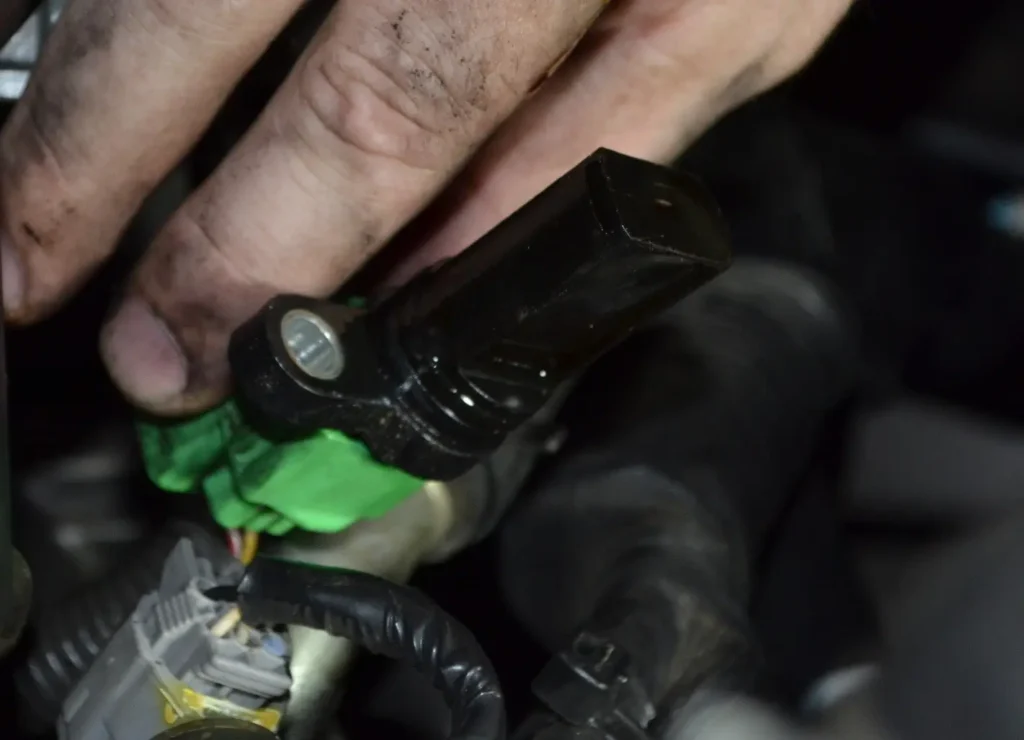
If tests confirm sensor failure, replacement is required. The camshaft sensor is typically located at the front of the engine near the camshaft sprocket.
Coolant Temperature Sensor
The coolant temperature sensor reports engine temperature to the vehicle computer. The computer uses this data to adjust fuel delivery, spark timing, valve timing, and other parameters.
If the coolant temperature sensor fails, the computer receives incorrect temperature data. As a result, the fuel mixture, ignition timing, and other factors will be off. This can prevent the engine from starting when hot.
Coolant temperature sensor issues also cause:
- Poor fuel economy
- Difficulty starting when cold
- Stalling after restarting
- Check engine light
To test for a bad coolant temperature sensor:
- Compare sensor readings with an OBD2 scanner to actual coolant temperature
- Check for corroded or damaged sensor wiring
- Use a multimeter to test sensor resistance compared to specs
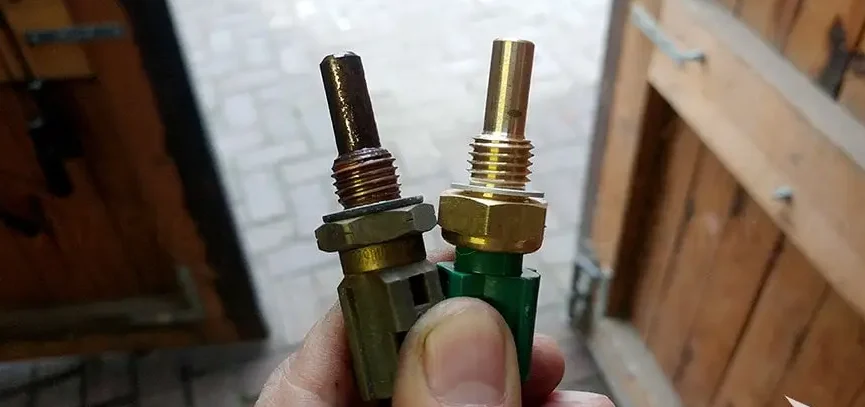
If testing confirms sensor failure, replacement is required. The coolant temperature sensor threads into the engine cylinder head or intake manifold.
Bad Starter Motor
When you turn the key to start the engine, the starter motor engages and spins the engine to life. Over time, the starter motor can wear out or its wiring can deteriorate. As a result, a failing starter may struggle to start a hot engine.
Other symptoms of a worn-out starter include:
- Click but no crank when starting
- Grinding or whining noise during starting
- Starter engaged but engine doesn’t spin
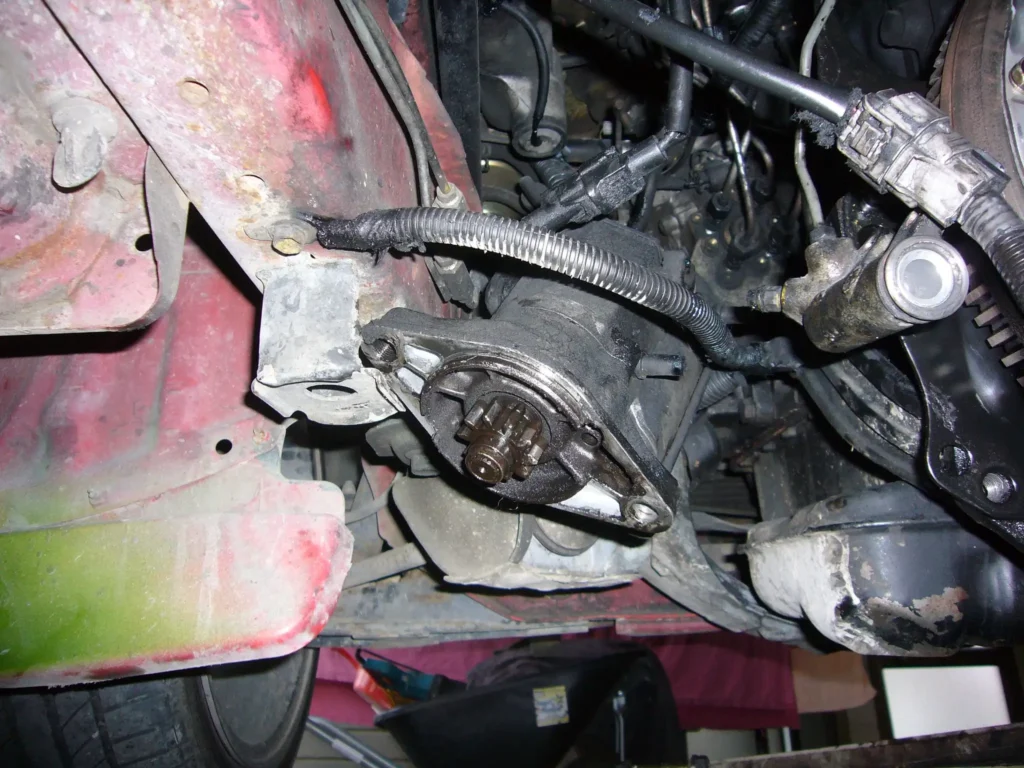
To evaluate starter motor operation:
- Listen for odd noises while starting
- Check wiring harness and connections for damage
- Use a multimeter to test voltage drop across the starter
- Tap the starter with the handle of a screwdriver to test for loose windings
If you confirm the starter is worn out, replacement is required. In some cases, you may be able to remove and rebuild the starter motor to save money.
Loose or Corroded Battery Cables
Loose battery cables or corroded terminals can increase resistance in the starting system. This added resistance makes it harder for the starter to engage and spin a hot engine.
Warning signs of loose or corroded cables include:
- Dim headlights when starting
- Clicking but no starter engagement
- Visible corrosion on terminals
- Battery light comes on when starting
To troubleshoot battery cables:
- Wiggle battery terminals and cables to check for looseness
- Inspect for white, green, or blue crusty corrosion
- Use a multimeter to check for excessive resistance
If cables are loose or corroded, cleaning terminals and tightening connections should resolve the issue.
Clogged Fuel Filter
The fuel filter screens dirt and debris from the fuel supply. Over time, the filter can become clogged, restricting fuel flow to the engine.
When fuel flow is limited, the engine may still run normally when cold. But as the engine heats up and requires more fuel, the restricted filter cannot keep up. This results in hot start problems and potential stalling.
Other clogged filter symptoms include:
- Misfiring or sputtering when accelerating
- Prolonged engine cranking before starting
- Check engine light for fuel system codes
To check for a clogged filter:
- Inspect the filter visually for dirt if possible
- Monitor fuel pressure using a gauge to check for restricted flow
If you confirm the filter is clogged, you will need to replace it. For most vehicles, the fuel filter is readily accessible along the frame rail or near the engine compartment.
Failing Fuel Pump
The fuel pump delivers pressurized gasoline from the tank to the engine. With age and mileage, the pump can weaken. When this happens, the pump may generate adequate pressure with a cold engine. However, as the pump heats up, its performance declines.
Insufficient fuel pressure from a failing pump makes it difficult for hot engines to start. It can also cause stalling and misfires when driving.
Other fuel pump failure warning signs:
- Long cranking before starting
- Stalling or sputtering at high speeds
- Whining or buzzing from the fuel tank
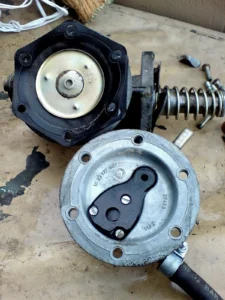
To diagnose pump issues:
- Use a fuel pressure gauge to check for adequate pressure
- Check for power and ground at the pump wiring
- Listen for the pump buzzing sound when the key is on
If tests indicate low pressure or electrical issues, the pump will need replacement. Accessing the pump requires dropping the fuel tank in most vehicles.
Vapor Lock in Fuel Lines
With older vehicles, vapor lock is another potential issue as to why the car won’t start until it cools down. Here’s how it happens:
Fuel absorbs heat as it travels through warm fuel lines. This added heat causes the fuel to vaporize inside the lines before reaching the engine. However, vaporized fuel doesn’t combust as efficiently.
The engine can draw from liquid fuel in the lines when cold. But after heating up, only vapor remains. This vapor lock prevents hot starting until ambient temperatures cool the fuel lines again.
Vapor lock causes:
- Hot weather driving
- Driving for extended periods
- Frequently stopping and starting
Warning signs include:
- Runs fine until stopping, then hot no start
- Starts fine when cool but not after driving
- Fuel smell from vapor release
To alleviate vapor lock:
- Insulate fuel lines
- Use vapor lock prevention additives
- Replace mechanical fuel pump with electric
For stubborn cases, the only permanent solution may involve replacing rigid metal fuel lines with flexible hoses. This better absorbs heat and resists vapor buildup.
Ignition System Issues
Problems with ignition components often worsen as temperatures increase. Faulty ignition coils, bad plug wires, failing control modules, and more can make hot starting difficult.
For example, ignition coils can overheat after prolonged driving. The added heat pushes internal resistance beyond the coil’s limits. This prevents the coil from delivering adequate voltage to fire the plugs.
On modern vehicles, you may also encounter defective ignition control modules. These modules fail when exposed to high temperatures over time. As they heat up, internal components begin to break down and fail.
Typical ignition system issues include:
- Misfiring and stalling when hot
- Oil leaks from bad plug seals
- Visible cracks or damage in coil or wires
- Check engine light for ignition-related codes
To diagnose ignition problems:
- Inspect ignition components for damage
- Check for power and ground at coil/wires
- Perform resistance tests on coils and wires
Any damaged or out-of-spec ignition components will need replacement. On most vehicles, coils, modules, and plugs are readily accessible for testing.
Solutions to Get Your Car Running Again
Now that we’ve explored why your car won’t start until it cools down, let’s review some solutions to get you up and running again:
- If a crankshaft or camshaft position sensor is suspect, check sensor resistance with a multimeter. Replace any out-of-spec sensors.
- For suspected coolant temperature sensor issues, compare live sensor data to actual engine temperature. Replace the sensor if readings are way off.
- With suspected starter motor failure, tap the starter with a screwdriver handle while an assistant cranks the key. Replace the starter if the tap makes it engage.
- For potential battery cable issues, wiggle cables by hand to check for looseness, clean any visible corrosion, and tighten connections.
- When diagnosing fuel delivery problems, use a fuel pressure gauge to check for adequate pressure at the rail. Replace the fuel filter or pump if the pressure is too low.
- For stubborn vapor lock conditions, replace rigid metal fuel lines with more flexible rubber hoses to reduce heat soak.
- Test ignition coils, wires, and modules for damage or excessive resistance. Swap any defective parts right away.
While not exhaustive, this covers many of the most common hot start issues. Thorough troubleshooting starting with the simplest fixes first is key. With some patience and testing, you can get your car running smoothly again!
Frequently Asked Questions
Why does my car only start when cooled down?
The most common reasons a car only starts when cooled down are a failing crankshaft position sensor, defective coolant temperature sensor, intermittent fuel pump failure, or vapor lock in the fuel lines once hot.
Why does my car not start when the engine is hot?
Hot no-start issues typically stem from sensor malfunctions (camshaft, crankshaft, coolant temp), vapor lock in fuel lines, weak fuel pump output, starter motor problems, or ignition system faults.
Why does my car only start when it is cold?
If a car only starts when cold but not after warming up, suspect problems like a clogged fuel filter, failing fuel pump, vapor lock, or ignition system components being heat sensitive.
Why does my car not start after driving for a while?
When a car does start and stall after driving some distance, common culprits include the crankshaft position sensor, camshaft position sensor, faulty coil packs, bad fuel pump, or vapor lock cutting off fuel flow to the engine.
Conclusion
Difficulty starting a hot engine can stem from multiple causes. But thorough troubleshooting and component testing can zero in on the root issue.
Replacing a bad sensor or fuel pump may be all that’s needed to get back on the road. For vapor lock conditions, insulating fuel lines and switching to flexible hoses can provide a permanent fix.
While frustrating, hot start problems don’t have to leave you stranded. With methodical diagnoses and the right replacement parts, you can get your car running right again. Just be sure to let that engine cool down completely before diving into any repair work!
